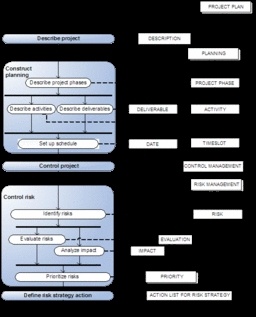One of the big struggles that most businesses face is when a need for business process change is recognized the timing of implementation quickly becomes a problem and often either the change gets substantially delayed or no change is ever made.
Reason for process changes
The primary reason that any business group considers a process change is to enhance the ability of the business to progress beyond the static state. Sometimes minor changes get forced on a business due to software upgrades, a supplier product change or some other third party pressure like changed tax rules. 
These kinds of changes usually do not have impact beyond single departments or small groups of employees and can be seen as incremental shifts which should be accommodated within the normal course of business.
More substantial process changes are often the result of an identified need within a major operating department or due to observation of major changes in the marketplace which require the business to respond. These types of changes are more challenging because they can have impacts in multiple areas of operations, usually require employee training and work modifications and can take significant resources to implement. It is these process changes that often get identified, even researched but the implementation becomes problematic.
Enhance the ability of the business to progress
With this objective for significant business process change to take place it is easy to see that failure to make the changes needed can often set the business back significantly. Maintaining the status quo process seems easier (and in the short term usually is) but the potential for not capturing the enhanced ability that a process change can provide, especially if done repeatedly, can be seen to hold major risk of the business falling behind its markets and competitors.
When is it right to go ahead?
I will argue that it is right to go ahead as soon as a clear improvement objective is identified and at least some of the steps needed to get underway are known then it is time to jump in. Will some people wonder if it is too soon? Probably. Will some items go less smoothly than in a perfect scenario? Most definitely. BUT and it is a big BUT, the gains from beginning to modify your processes and getting on the learning curve to better, more efficient or productive operations will out weight these risks in the long run and they will break the inertia which holds change back. One of the reason that newer businesses often grow faster is because they often don't wait to get all of the ducks in order to make changes in process. They identify the potential and go for it. More mature businesses find this much harder to do and often get caught up in analytic paralysis and fail to innovate or shift.
An example
Suppose a business finds that its current paper based process for tracking and collecting bills of lading records is taking a long time to get the correct paper in the hands of the operators so invoices can be collected promptly. This kind of process is very common in traditional transaction based businesses and the delays can lead to power cash flow, increased levels of unpaid invoices and high collection labour and costs.
I have had experience in this type of change and the solution was to move to an electronic capture and recording process for the bills of lading so that operators could call up the signed copies of bills of lading while on the phone doing the first followup call. By being to identify who signed for the shipment and electronically supplying a copy of the signed bill of lading the resulting business process change reduced the outstanding receivables by a significant percentage, reduced employee frustration when making the calls and improved cash flow substantially by accelerating collections and reducing bad payables.
By picking a specific, manageable, highly identifiable target for the process change the client was able to introduce an significant technology improvement to their processes. The technology had the ability to be expanded to other parts of the business based upon the success shown in one target area. This proof of concept implementation strategy has a potential for high success in most instances when used correctly.
Timing does matter
Picking the timing for making process changes does matter. If a major process change was proposed for and accounting area and implementation at year end was the timing chosen it is critical that the department is able to handle such a change. The same is true for production changes (don't pick a period where it is already hard to meet targets0, sales changes etc.
With these kinds of considerations acknowledged and understood the right time for a business process change is NOW!. Now is defined as the first available opportunity to identify, research and begin the process change that be best enhance the business prospects for success. Implement, iterate and then seek the next step to enhance the business.
This kind of constant seeking for process improvements that can enhance business prospects can become a part of a business culture and can help avoid stagnation and obsolescence.




